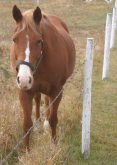Researchers expected better performance from steers fed corn silage-based diets because of their higher starch content
A recent feeding trial that compared barley and corn silage in backgrounding diets revealed unexpected results.
“What they ended up finding was virtually no meaningful differences in animal performance, either in the backgrounding periods when they were growing them, or in the finishing period when they were fattening them up for slaughter,” said Reynold Bergen from the Beef Cattle Research Council, who said the study was producer funded from national checkoff.
“They really saw no differences to speak of on the carcass side, either in terms of carcass weight or red meat yield or quality grade,” said the science director.
Read Also

Beef check-off collection system aligns across the country
A single and aligned check-off collection system based on where producers live makes the system equal said Chad Ross, Saskatchewan Cattle Association chair.
Despite higher growing costs, corn can potentially produce 50 percent higher silage (and starch) than barley, provided the right corn hybrid is selected with favourable growing conditions.
In her 2014 beef cluster study, Karen Beauchemin of Agriculture Canada in Lethbridge examined varying ratios of barley and corn silage in the diets of cattle being backgrounded, compared to a barley-based diet as a control.
She expected better performance from the steers fed the corn silage-based diets because of its higher starch content over barley silage.
However, on this particular growing year using 2,175 corn heat unit hybrid corn (irrigated), the starch content in the corn was slightly less than the barley silage.
Instead of 30 percent or more, the corn starch was 28 percent while the barley contained 24 percent instead of the typical 22 percent or less.
“In the year that we compared our barley and our corn, actually it turned out that the energy content of those two forages was very similar. And that was an unusual year,” she said.
While corn silage has the potential to have higher energy and better feed conversion, Beauchemin said it takes more management and producers need to select the right hybrid that will mature in the area where it is grown.
Luck is also a factor.
“It was a good year for barley and not a great year for corn. It was a cooler year,” she said.
“For me, it really comes down to hybrid selection and the higher the content unit required by the hybrid, the greater is the risk for the producer…. Not every year is an average year. Some years of colder and some are warmer.
“If you pick a hybrid that needs a lot of heat and you get a cold year, then you’re really in trouble, you’ve got to deal with that silage.”
Bergen also pointed out that some newer varieties of corn require less heat than older varieties, but that doesn’t mean that they’re always going to work because not every growing season is the same.
Selecting a corn hybrid that has a corn heat unit rating that closely matches average corn units in a grower’s area can also be misleading.
He said corn usually produces higher energy silage than barley, but few years are average and long-term averages might give a false sense of security. Actual corn heat units in Lethbridge have only been average in one out of the past eight years.
“Averages mean nothing because every year is different. If you’re not quite experienced in terms of selecting and growing corn, you really need to do your homework and talk to some experts before you embark into this,” he said.
Every year produces different feed quality, especially for corn, so cow-calf and backgrounding operations should test feed to determine if the cattle diet needs supplementation, said Bergen.
Added Beauchemin: “Beef producers often don’t test their feed. It seems like if you’re using the feed, like in a feedlot diet, just as a roughage, you probably don’t need to, but if you’re trying to get really good gain on backgrounding cattle, you should be testing your feed.”
The added cost of testing can also be made up in the savings from having balanced rations.
“If you’re not giving the animals enough, their reproductive or growth performance is not going to be optimal. And if you’re feeding them too much, you’re essentially wasting feed. In some cases, if your feed is really high quality, then you may be better off selling it and buying lower quality feed,” said Bergen.


















